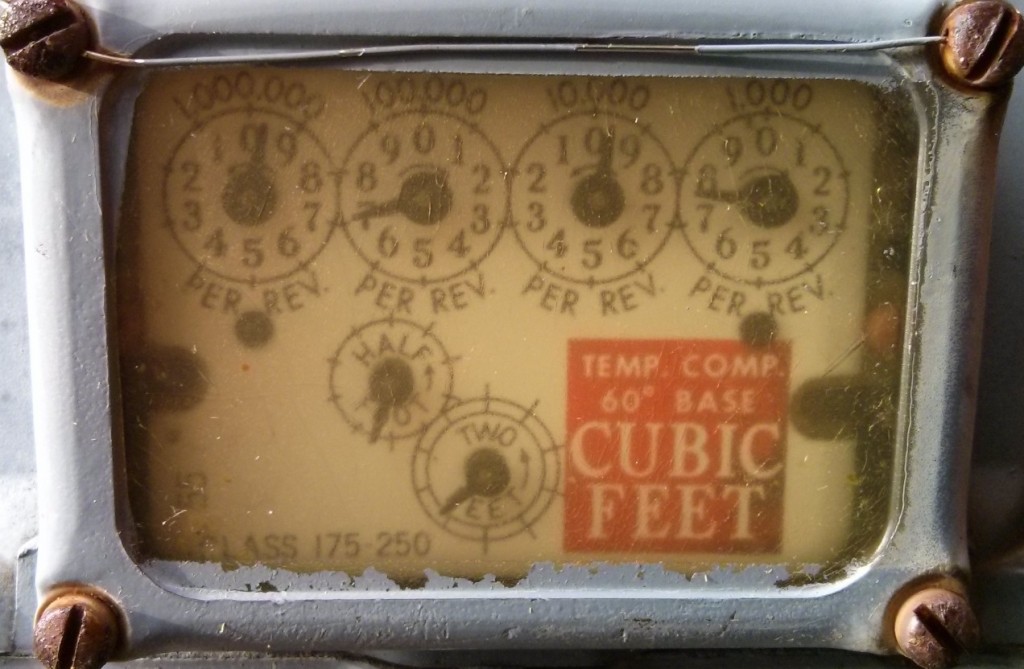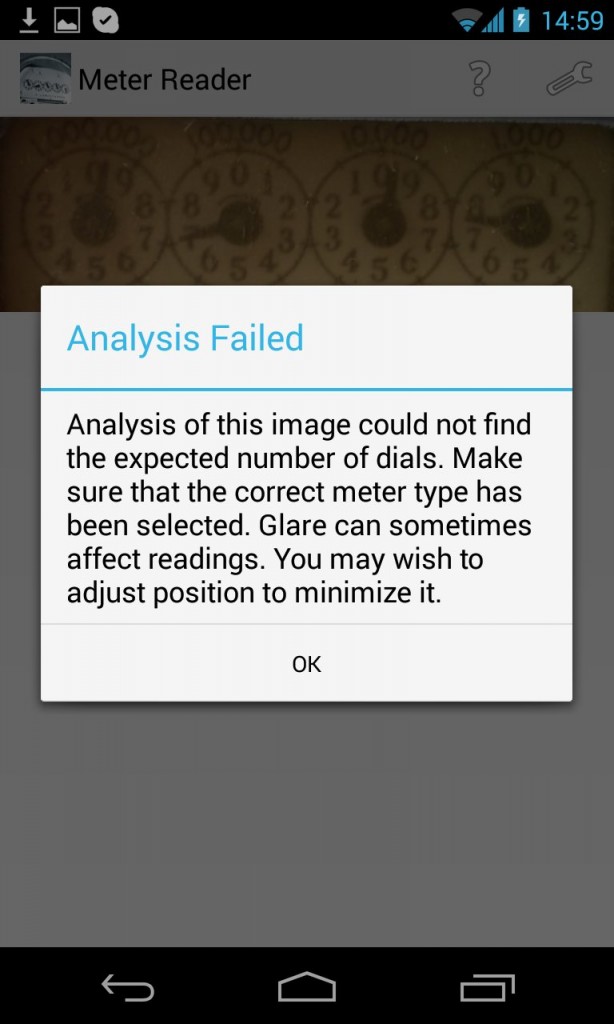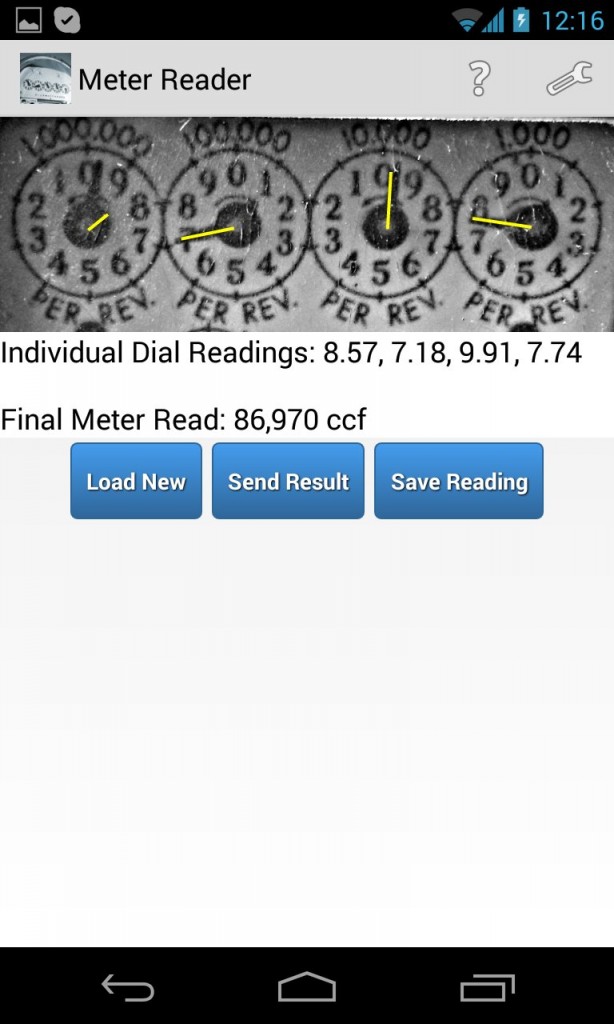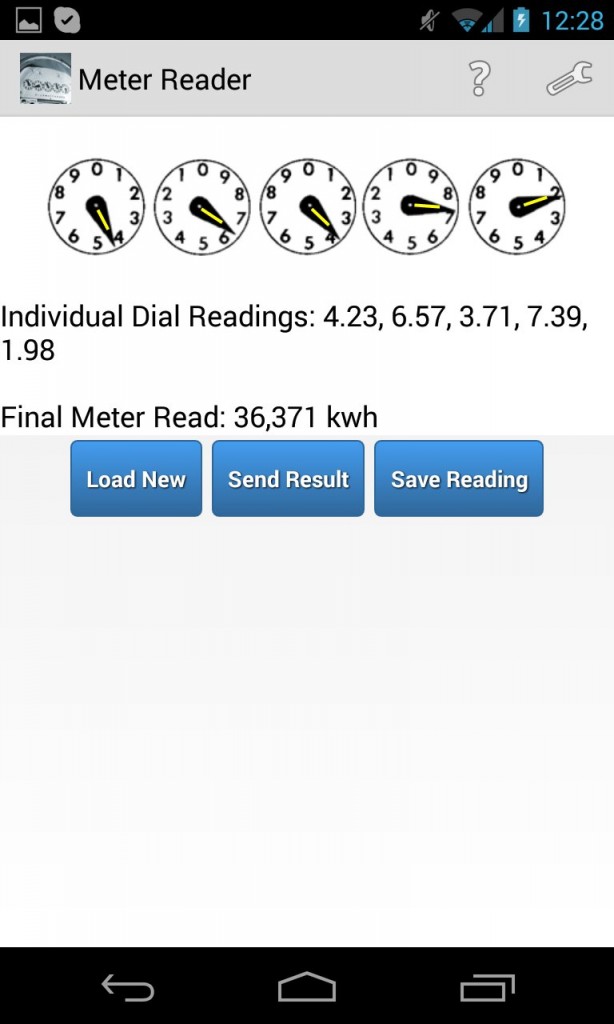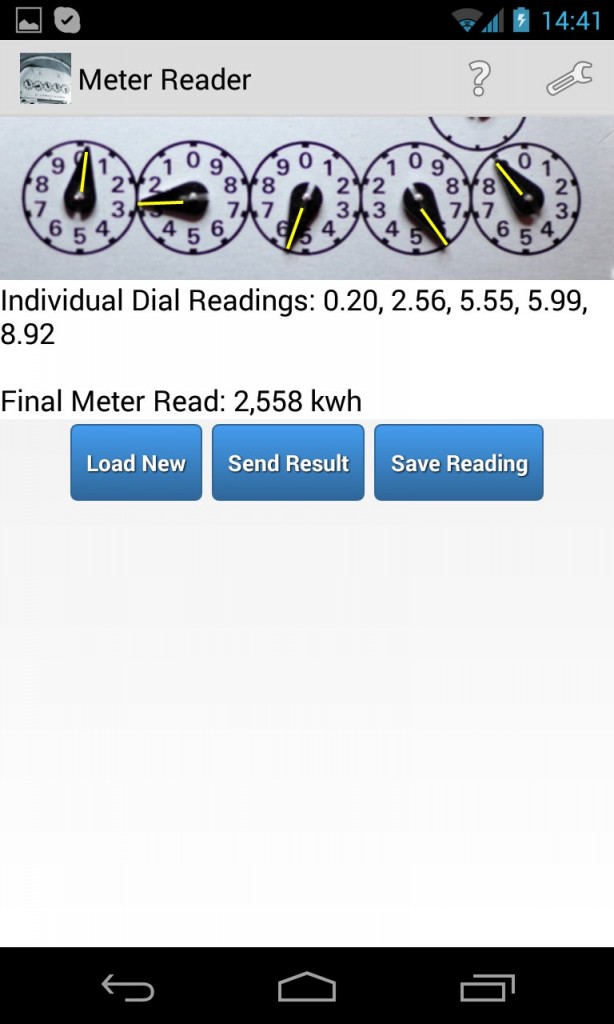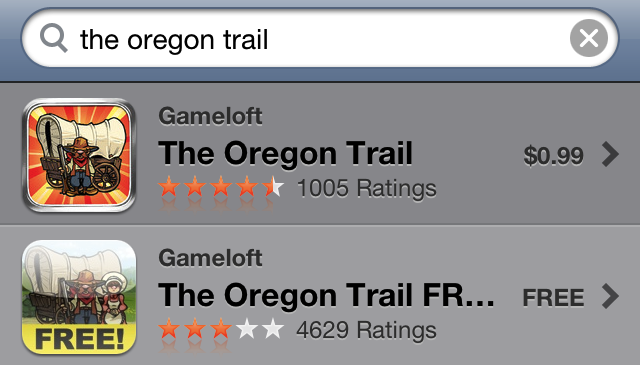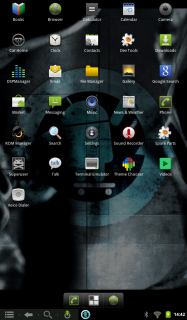Utility Meter Reader is a great idea for an app. Using the camera on your smartphone, snap a picture of your utility meter’s analogue dials, and through the power of some clever image processing, the app will return your meter reading. 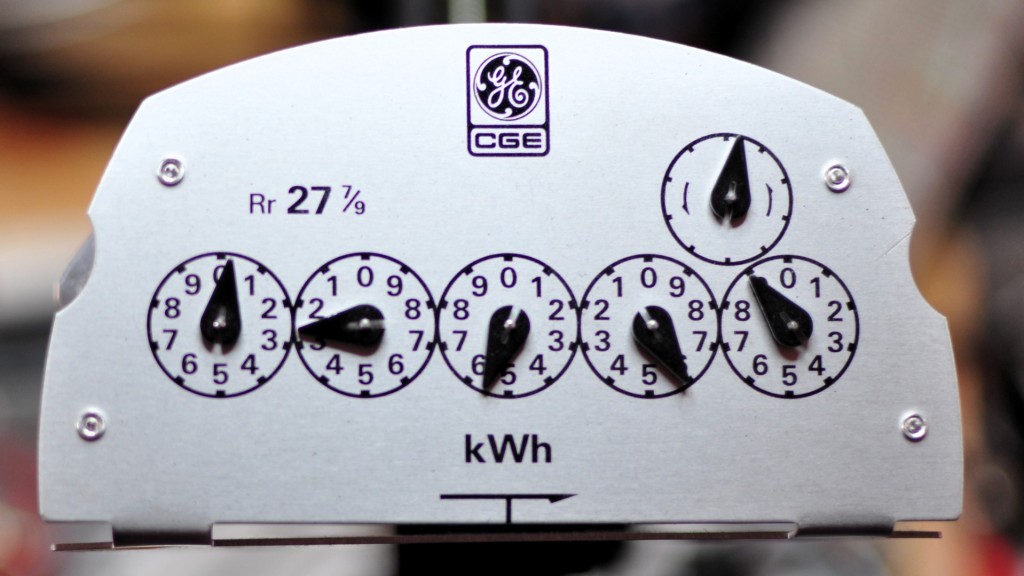 Traditional meters are a bit hard to read, as the dials rotate in alternate directions. You won’t realize why this is unless you get a chance to peek behind the fascia:
Traditional meters are a bit hard to read, as the dials rotate in alternate directions. You won’t realize why this is unless you get a chance to peek behind the fascia:
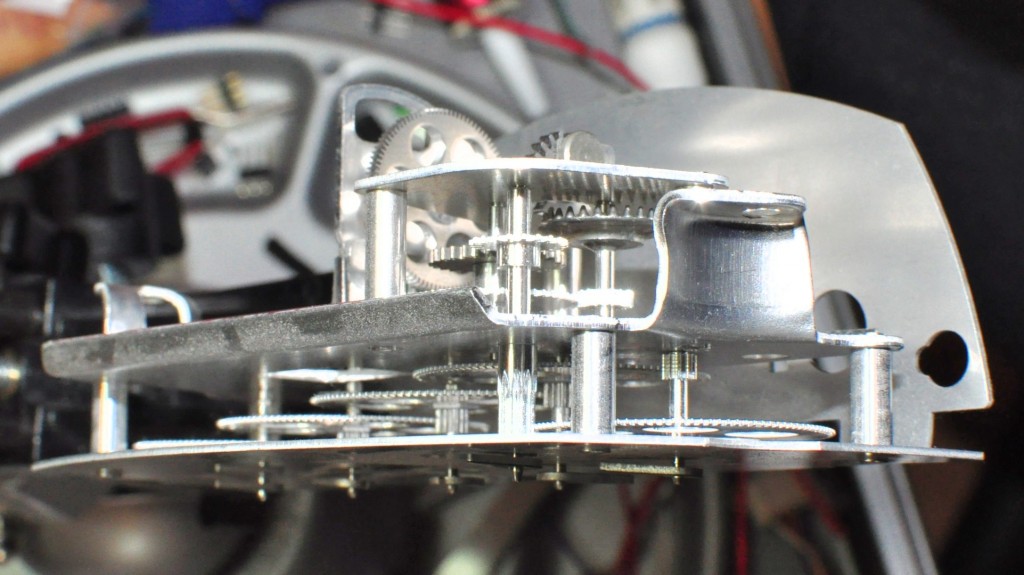 There’s an incredibly fiddly set of 10:1 reduction gears in there, so each dial registers a tenth of the one next to it. Because it’s a drive-train, adjacent shafts rotate in opposite directions. This serves to keep the cost of the meter down at the expense of having to think a bit about how to read the thing.
There’s an incredibly fiddly set of 10:1 reduction gears in there, so each dial registers a tenth of the one next to it. Because it’s a drive-train, adjacent shafts rotate in opposite directions. This serves to keep the cost of the meter down at the expense of having to think a bit about how to read the thing.
We only have one dial meter on the house. It’s a 58 year old gas meter (same age as the house) and it’s certainly been around a bit:
Here it’s reading 969700 ft³, ignoring the lower dials; the units are hundreds of cubic feet. Let’s see how Utility Meter Reader made out with that:
Not very well, it seems. How about if I carefully process the image, sharpening it up, straightening it, and making it very high-contrast greyscale:
Hmm, the big figure’s completely wrong, but it got the rest.
Okay, so let’s feed it a nice canned example, like this one (courtesy of Greeneville Light & Power System‘s “How to Read Your Electric Meter†page). Even I can see that this reads 46372:
 According to Utility Meter Reader, though:
According to Utility Meter Reader, though:
The big figure’s off by one again. Very strange, especially since it picked up 4.23 for the first dial. In desperation, I clipped a small part of the GE meter image from my screen, and sent it to the app:
2558 is the right answer. Phew! But the app only seemed to work on a well-lit, clean meter fascia with no glass in the way and an image taken by a rather nice DSLR. One out of three ain’t quite good enough.
One concern I have about the app is that — while it allows you to e-mail a reading to your utility — it quietly BCCs a copy of that reading (which includes your meter details) to imeterreader [at] the-next-future.com. I didn’t see much of a privacy contract when I downloaded the app onto my Android phone, so I don’t know what they are going to do with my readings or personal data. So if it ever gets to working properly, I won’t use that feature.
The app’s a good idea, but the implementation’s pretty far off where it needs to be. Of course, one could quickly whip up an implementation in OpenCV to identify dial circles and read the pointers. But do all this on your smartphone, however, and you’d fall foul of their US patent application.
